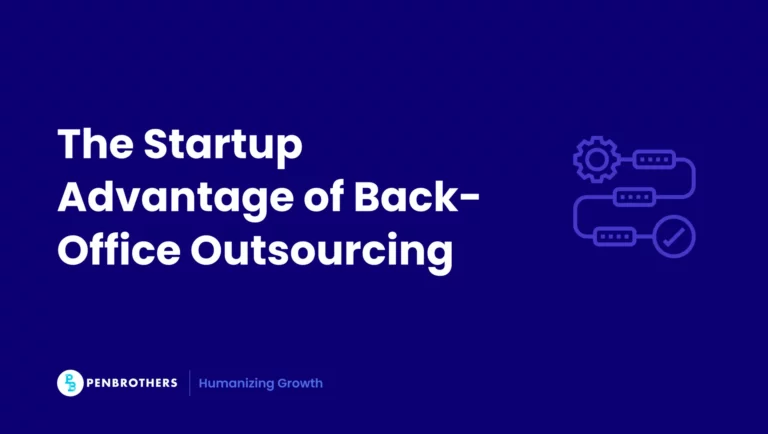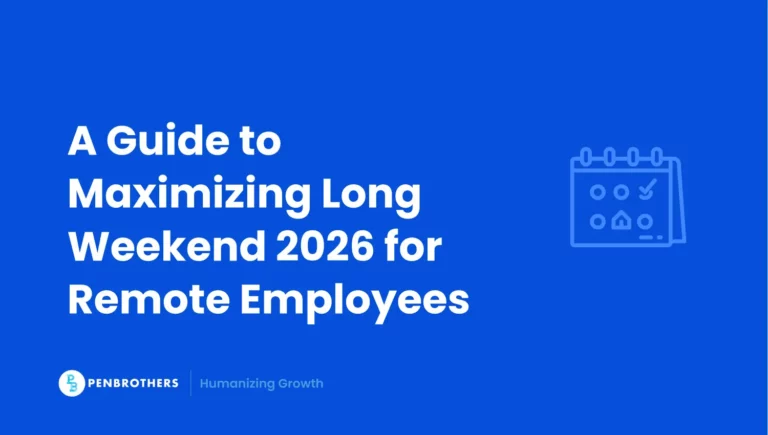The average salary in the Philippines depends entirely on who’s counting. The Philippine Statistics Authority, the government’s official source, reports ₱19,436 monthly for 2025 (projected from ₱18,423 in 2022 with 5.5% growth). Private sector surveys suggest ₱44,800. Both numbers are accurate, both are useful, and both will mislead you if you don’t understand what they actually measure.
The government counts everyone: rice farmers in Mindanao, call center agents in Makati, construction workers in Cebu. Private surveys count the formal economy: companies with HR departments, structured payrolls, and the kind of roles you’d actually outsource. The difference isn’t academic. It’s the difference between making smart hiring decisions and expensive mistakes.
Key Takeaways
- Two Different Salary Realities: It is critical to understand that there are two “average” salaries in the Philippines. The official government average (₱19,436/month) includes all workers (e.g., agriculture, informal labor) and is not useful for hiring. The private sector average (₱44,800/month) reflects the formal, skilled economy where businesses actually outsource.
- Location Dictates Pay: Salaries for skilled professionals vary significantly by region. Metro Manila commands the highest premium, with an average skilled salary of ₱50,000/month. Secondary cities like Cebu and Davao are next, while provincial rates are the lowest.
- Salaries Are Set by Skill, Not Just by General Averages: The most in-demand, highest-paying jobs are in Technology, Finance, and high-level Marketing. A software developer (₱93,500+) or a CPA (₱82,500+) earns a salary dictated by global demand and specialized skills, not by the national average.
- “Good” Salary is Highly Contextual: A salary of ₱30,000/month (~$540 USD) is a competitive starting wage for an entry-level, non-technical role. However, for a skilled, mid-level professional like a developer or financial analyst, this amount is far below the market rate, which can be two to five times higher.
Understanding Philippine Salary Data: Two Different Realities
Salary growth remains robust. Projections for 2026 show a stable 5.5% average increase for professionals, continuing the 2025 trend. This growth is fueled by a tight, competitive labor market
The Philippine Statistics Authority (PSA) measures everyone. Rice farmers earning ₱8,000. Software developers pulling ₱150,000. Street vendors. Bank presidents. The result: ₱19,436 monthly average. True, comprehensive, and almost useless for hiring decisions.
Private surveys measure differently. They count companies with payroll systems, HR departments, and the kinds of structured roles you’d recognize. Urban offices. Skilled professionals. The formal economy where outsourcing actually happens. Result: ₱44,800 monthly.
Here’s what each dataset reveals:
Government data: The whole picture. Every farmer, every CEO, every jeepney driver. Income inequality in all its stark reality.
Private sector surveys: The hiring picture. Skilled workers in competitive markets. What you’d actually pay for talent that matters.
The gap tells the real story. Entry-level skilled workers start around ₱25,000 ($455). Senior professionals hit ₱125,000+ ($2,275). The spread reveals a country in transition, where traditional work pays subsistence wages and skilled work pays globally competitive salaries.
What Drives Salary Growth in the Philippines
Companies are opening their wallets. Philippine firms reserve 1% of payroll for promotions, another 3% for market adjustments. The money follows demand, and demand is fierce.
Four forces shape the market:
Competition burns hot. The Philippines has more jobs than skilled workers. IT, finance, healthcare, every sector fights for the same talent pool. Salaries rise because they have to.
Economic maturity drives the floor upward. According to the Philippine Institute for Development Studies (PIDS), the Philippines is on track to achieve ‘upper middle-income status’ by late 2025 or early 2026. This transition is fueled by sustained GDP growth (projected at 6.1%) and easing inflation. However, while the headline inflation rate has stabilized, the cost of core services—specifically housing and private education—has surged. This means that for the skilled middle class, a ‘stable’ economy still requires aggressive salary adjustments to maintain purchasing power.
Remote work changes everything. A Filipino developer can now work for Silicon Valley rates while living in Makati. Local companies either match global standards or lose talent to Zoom calls and international paychecks.
Inflation demands answers. Rising costs require rising wages. Companies that ignore this math lose employees to those that don’t.
Regional Salary Variations Across the Philippines
Location determines everything. A software developer in Manila can earn twice as much as a developer in Tarlac City.
Metro Manila: Where the Money Lives
Manila pays ₱50,000 ($910) monthly for skilled work. The capital commands premium wages because it offers premium everything: multinational headquarters, international clients, competitive markets where talent actually matters. Minimum wage sits at ₱645 daily, but nobody hiring offshore talent cares about minimum wage.
The Second Cities
Cebu and Davao split the difference at ₱35,000 ($635) monthly. These cities offer what Manila offers (BPO centers, growing tech sectors, foreign investment), just smaller, quieter, cheaper. The work pays less but stretches further.
Provincial Reality
Provincial salaries range from ₱20,000 to ₱35,000 ($365 to $635) for skilled work. Below that lies a different economy: rice farming at ₱8,000 monthly, informal trade, subsistence work. Minimum wages drop to ₱316 daily in remote regions like BARMM. This is where the PSA’s national average comes from, and why it misleads anyone hiring skilled talent.
The lesson: Manila pays the most, provinces pay the least, and everything in between depends on how much skilled work exists in a given place.
A Note on These Salary Ranges: The following figures represent the 75th percentile (top 25%) of the market. They reflect the compensation required to hire, and more importantly retain, skilled, experienced professionals who can “actually deliver”—not the general market average, which is saturated with entry-level candidates and low performers. For companies seeking to build a long-term, high-output team, these ranges are the realistic benchmark.
Industry Salary Breakdown: Where the Money Is
Industry shapes everything. A developer in tech earns what three customer service reps make combined. The market decides value, not fairness.
Technology
Tech workers pull ₱60,000 to ₱237,000 monthly ($1,100 to $4,300).
Software developers earn ₱93,500 to ₱237,000 ($1,700 to $4,300). Front-end specialists make ₱66,000 to ₱203,500 ($1,200 to $3,700). Project managers sit at ₱49,500 to ₱154,000 ($900 to $2,800).
The money clearly follows global demand. For complete salary breakdowns across all tech roles, including QA specialists, business applications developers, and emerging AI positions, see our comprehensive Philippines remote team salary guide.
Customer Service
Customer service salaries show a wide range based on complexity. General support roles (e.g., Tier 1 call center agents) typically start between ₱25,000 and ₱40,000 ($450 – $720).
The ₱44,000 to ₱55,000 ($800 to $1,000) range is reserved for specialized, high-stakes roles, such as Tier 2 Technical Support, SaaS product experts, or complex financial services support, where strong problem-solving and technical skills are mandatory. These are the roles that directly impact customer retention.
Climb to customer success manager and hit ₱115,500 to ₱143,000 ($2,100 to $2,600).
The progression matters. BPO offers reliable work at predictable wages. Not glamorous, but stable.
Finance
Accountants with CPAs command ₱82,500 to ₱104,500 monthly ($1,500 to $1,900). Financial analysts match that range at ₱71,500 to ₱104,500 ($1,300 to $1,900). Finance managers reach ₱115,000 and ₱145,000+ ($2,050 – $2,600).
For detailed compensation data across all finance roles, including tax specialists, billing coordinators, and revenue managers, our detailed salary benchmarking guide provides comprehensive market insights.
Other Industries
HR coordinators start at ₱38,500 to ₱55,000 ($700 to $1,000). Talent acquisition specialists climb to ₱55,000 to ₱93,500 ($1,000 to $1,700). Training managers top out at ₱115,500 to ₱143,000 ($2,100 to $2,600).
Content writers earn ₱55,000 to ₱88,000 ($1,000 to $1,600). Digital marketing managers reach ₱115,500 to ₱154,000 ($2,100 to $2,800). SEO specialists settle at ₱88,000 to ₱104,500 ($1,600 to $1,900).
Administrative assistants make ₱49,500 to ₱66,000 ($900 to $1,200). Executive assistants bump to ₱66,000 to ₱93,500 ($1,200 to $1,700). Operations managers command ₱88,000 to ₱143,000 ($1,600 to $2,600).
Sales development reps start at ₱66,000 to ₱82,500 ($1,200 to $1,500). Account managers reach ₱115,500 to ₱143,000 ($2,100 to $2,600). Sales managers match that ceiling at ₱115,500 to ₱154,000 ($2,100 to $2,800).
The data tells the story, but the details matter more. For complete salary breakdowns across every role—from DevOps engineers to digital marketers to operations specialists—our comprehensive Philippines salary guide maps the full compensation landscape.
What is a good salary in the Philippines?
Good depends on context. Compare against the national average and everyone looks overpaid. Compare against skilled sector rates and half your offers look insulting.
Manila: Where Expectations Live
Metro Manila’s skilled market sets the bar. Entry-level professionals expect ₱30,000 to ₱50,000 monthly ($545 to $910). Mid-career workers demand ₱50,000 to ₱80,000 ($910 to $1,455). Seniors command ₱80,000+ ($1,455+). These numbers reflect reality: multinational headquarters, competitive markets, and the simple fact that skilled work costs more where everyone wants to do it.
Provincial Math
The provinces offer different arithmetic. Entry-level professionals earn ₱20,000 to ₱35,000 ($365 to $635). Mid-career workers make ₱35,000 to ₱60,000 ($635 to $1,090). Seniors reach ₱60,000+ ($1,090+). Lower numbers, higher purchasing power. A ₱40,000 salary buys more life in Iloilo than in Makati.
Industry Changes Everything
A teacher earning ₱35,000 ($635) celebrates, nearly double the national average. A software developer at that same salary starts updating their resume. Context shapes perception. Market forces shape paychecks.
What is a livable wage in the Philippines?
Livable wage sounds like bureaucratic speak until you face the math. A family of five in Manila needs ₱25,226 monthly ($460) to live with dignity. Not luxury. Dignity. The gap between survival and respect costs exactly that much.
Individual Reality
Single professionals in Manila need different calculations. Basic survival runs ₱20,000 to ₱25,000 monthly ($365 to $455). This figure, however, is a thin buffer against reality.
As of late 2025, the average rent for a one-bedroom apartment in Manila’s city center is ₱27,810 ($495).
This single expense consumes an entire “average” salary, illustrating why skilled professionals require wages significantly above the national or “livable” average to build a stable life. Comfortable living starts at ₱30,000 to ₱40,000 ($545 to $730): choice in where to live, occasional dinners out, clothes that aren’t secondhand. Real security begins at ₱45,000+ ($820+). This includes savings, investments, and the ability to handle emergencies without panic.
Comfortable living starts at ₱30,000 to ₱40,000 ($545 to $730): choice in where to live, occasional dinners out, clothes that aren’t secondhand. Real security begins at ₱45,000+ ($820+). This includes savings, investments, and the ability to handle emergencies without panic.
Family Economics
Families multiply everything. Four people in Manila need ₱35,000 to ₱45,000 monthly ($635 to $820) just to avoid desperation. Basic comfort requires ₱50,000 to ₱70,000 ($910 to $1,275): better schools, reliable healthcare, and enough space for children to do homework. Middle-class life demands ₱80,000+ ($1,455+)—the privilege of planning for the future instead of just surviving the present.
Provincial Calculations
Move outside Manila and the numbers shift downward by about 25%. Single professionals manage on ₱15,000 to ₱30,000 ($275 to $545). Families get by on ₱25,000 to ₱60,000 ($455 to $1,090). Lower costs, different pressures.
Philippine Salaries vs. Global Markets
The math is brutal and beautiful. A US software developer earns $125,000 annually. Their Philippine counterpart makes $13,000 to $45,000. Same code, different geography, entirely different life.
Customer service tells the same story with smaller numbers. Americans earn $42,000 annually answering phones. Filipinos make $9,600 to $12,000 doing identical work. A UK financial analyst commands £50,000. Manila’s equivalent earns $15,600 to $22,800.
The arbitrage drives everything. Companies save money. Filipinos earn multiples of local wages.
Everyone wins.
The numbers speak. Now the question becomes: what will you build with them?
Contact us to start the conversation.
Answering Key Questions: Context, Class, and USD
The data in this article is designed for strategic hiring. Below, we address common “People Also Ask” questions to provide further context.
What is a middle-class salary in the Philippines?
The definition is precise. The Philippine Institute for Development Studies (PIDS) defines the middle class as households earning between ₱43,828 and ₱76,669 per month.
However, in the context of outsourcing and skilled labor, ‘middle class’ lifestyle expectations—owning a car, occasional travel, private healthcare—typically require an individual income of at least ₱60,000 ($1,070). This is the ‘comfort threshold’ where employees stop worrying about bills and start focusing on career growth.
Is $500 a lot in the Philippines?
In 2025, the answer is a definitive no. Five hundred dollars converts to approximately ₱28,000. While this amount is above the legal minimum wage (₱645/day or ~₱14,000/month), it is effectively a ‘survival wage’ in major urban hubs like Makati or BGC.
For a skilled professional, ₱28,000 covers rent in a shared space, basic food, and commuting costs—with zero margin for error, savings, or healthcare emergencies. If your offer is $500, you are not hiring a ‘professional’; you are hiring someone who is actively looking for a better job.
Can you live on $3,000 a month in the Philippines?
Yes, and you can live exceptionally well. Three thousand dollars is roughly ₱168,000 per month. This places an individual in the top 10% income bracket of the country.
At this level, one can afford:
- A premium condo in a central business district (₱40k–60k).
- Full-time domestic help (₱10k–15k).
- Regular dining out and leisure travel.
- Significant monthly savings. For U.S. expats or digital nomads, $3,000 represents a ‘luxury’ lifestyle that would cost $8,000+ in cities like New York or San Francisco.
Is 30k per month a good salary in the Philippines? (And what is a good salary in USD?)
This is the most common question, and the answer is: it depends entirely on the role.
For an entry-level, non-technical role (like a fresh graduate administrative assistant or a general virtual assistant), ₱30,000 per month (~$540 USD) is considered a good, competitive starting salary. It is significantly above the minimum wage and provides a “livable” income, as discussed above.
For a skilled, experienced professional (like a software developer, financial analyst, or digital marketer), ₱30,000 per month is not a competitive salary. As this guide’s data shows, top talent in these fields commands 2x to 5x that amount.
When thinking in USD, a “good” salary in the Philippines depends on your goal:
- $500 – $700/month: Competititve for entry-level, generalist roles.
- $1,000 – $1,800/month: Competitive for mid-level professionals and skilled specialists (e.g., accountants, project managers, senior HR).
- $2,000 – $4,500+/month: The range required for top-tier, senior, and highly technical talent (e.g., senior developers, finance managers, AI specialists).
Frequently Asked Questions
There are two main averages. The official government (PSA) average for all workers is projected to be ₱19,436 per month. However, a more realistic average for the skilled, private-sector jobs that companies outsource is significantly higher, at ₱44,800 per month.
A “livable wage” for a family of five in Manila is estimated to be around ₱25,226 per month just to cover basic necessities with dignity. For a single professional in Manila, a “comfortable” salary (allowing for savings and discretionary spending) starts at around ₱30,000 to ₱40,000 per month.
It depends entirely on the role. For an entry-level, general administrative role, ₱30,000 is a good, competitive salary. For any skilled, experienced, or technical professional (like a software developer, accountant, or senior marketer), ₱30,000 is far below the market rate, and you would need to offer significantly more to attract qualified talent.
Salaries for high-demand, skilled roles are much higher than the national average. A mid-to-senior level software developer can earn between ₱93,500 and ₱237,000 per month. A Certified Public Accountant (CPA) typically commands between ₱82,500 and ₱104,500 per month.
Metro Manila has the highest salaries, with a skilled professional average of around ₱50,000 per month. Other major cities like Cebu and Davao are about 30% lower (around ₱35,000/month), and provincial areas are lower still.






